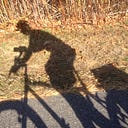Arthur Duncan Helped Tap Dancing Survive the Wilderness Years
The rich and underappreciated art of American tap dancing lost an intriguing and invaluable pioneer earlier this month with the death of Arthur Duncan.
Duncan, who was 97, tapped in one of the unlikeliest places, the Lawrence Welk television show, during years when too many traditional floorboards had gone silent.

Duncan first cracked national television on The Betty White Show in 1954, stirring resistance from Southern television stations that correctly feared this sort of casting could lead to race-mixing.
But it was his long stint with Welk, from 1964 until Welk retired in 1982, that gave Duncan his highest profile and reminded TV viewers that tap wasn’t just a quaint noisy relic from old Busby Berkeley movies.
“I’ve been accused of keeping tap alive,” Duncan said jokingly in a 1989 interview. “I don’t know what truth there is in that. I do know I was the only one doing tap on a regular basis on national television.”
That didn’t escape the notice of, among others, the late Gregory Hines. “When nobody was home, I’d tune in Lawrence Welk, hoping to catch Arthur,” Hines said in 1989. “To me, he was one of the most underrated dancers around. Other dancers knew he was great.”
Many of those other dancers were scrambling themselves in those years, which stretched from the late ’40s into the 1970s and were widely considered tap’s great famine.
In the pre-television years when vaudeville and touring music shows were America’s go-to live entertainment, tap dancers were in high demand. Not always highly paid, but reliably employable.
Dance acts from Bill Robinson to Buck and Bubbles, The Four Step Brothers, Coles and Atkins, Chuck and Chuckles, Teddy Hale, Bunny Briggs and dozens of others were featured attractions on those shows. Big bands often worked with a regular tap dancer — who the late Honi Coles said would give the band its beat. Night spots like New York’s Apollo and Cotton Club had chorus lines that were rooted in tap and were known to graduate artists like Lena Horne.
Tappers like Robinson, Bubbles and the Nicholas Brothers were hired for Hollywood movies.
Then in the 1940s a couple of things happened.
First World War II and its aftermath changed the dynamics and logistics of show biz, downsizing the old revues and big bands into solos and small combos.
And then there was the musical Oklahoma!, whose new style of dancing was such a sensation that it pushed tap into the wings.
“There was a long time when tap was out of sight,” said Duncan. “Everything turned to modern jazz. Tap used to have many vehicles — nightclubs, motion pictures, Broadway musicals — and when we lost those, it lowered the demand.
“It didn’t really come back until the ’80s, with shows like Sophisticated Ladies, 42nd Street or My One and Only. Then the movie Tap really brought it to the forefront again.”
In between, said Duncan, the Welk show helped him remain visible while he did what show biz people have always done: He adapted.
“During the years when tap wasn’t that popular, I did a lot of work in Europe,” he recalled. “There were still fans there. I’d be recognized in the streets. I also realized you couldn’t just tap, so I developed a whole act. Singing, dancing, some patter. I’d do about 45 minutes.

“I did it for about 30 years, making the rounds, making a living.”
It wasn’t exactly Tap Lite, but on stage as on the Welk show, it was a little different.
“I did rhythm dancing, close rhythm,” he said. “I also enjoyed moving around a bit, though I didn’t do that on the [Welk] show. When you’re doing someone else’s program, you dance to their music. I was just glad to be out in the marketplace.”
Left to his own original devices, Duncan noted, he might not have been tapping at all. He might have been dispensing prescriptions, because as a boy he wanted to become a pharmacist.
“When I was 13, I was grabbed by the throat and put into a junior high school show,” he said. “I didn’t want to do it. But eventually show biz got to be fun.”
He also embraced one of tap dancing’s most revered traditions: theft.
“Bill Robinson was a great influence on all dancers,” he said. “But I tried to steal as much as I could from every dancer I saw. You can’t do it exactly the way they do it, so you borrow and you make the step your own.”

Pharmacy’s loss was tap’s gain, he allowed: “This has taken me to places I could never have gone otherwise.”
That included Lawrence Welk, and if Welk tended to reshape every song into catchy fluff, Duncan saw that as neither a commercial nor an artistic problem.
“Welk projected ‘square,’ and I guess he was,” said Duncan. “But I think there’s a lot of that in all of us.”
Dancing to the Champagne Music of Lawrence Welk didn’t stop Duncan from creating artwork with his feet, which is what tap dancing does.
“Tap has always been an art form,” he said. “Whether it’s always been recognized that way, I don’t know, but seeing it would open a lot of people’s eyes.
“It’s American. It has origins around the world, but it was born on street corners here. It’s like Dixieland jazz. America refined it into an art form.”
Perpetuated by generations of feet, sometimes in the most unlikely places.

